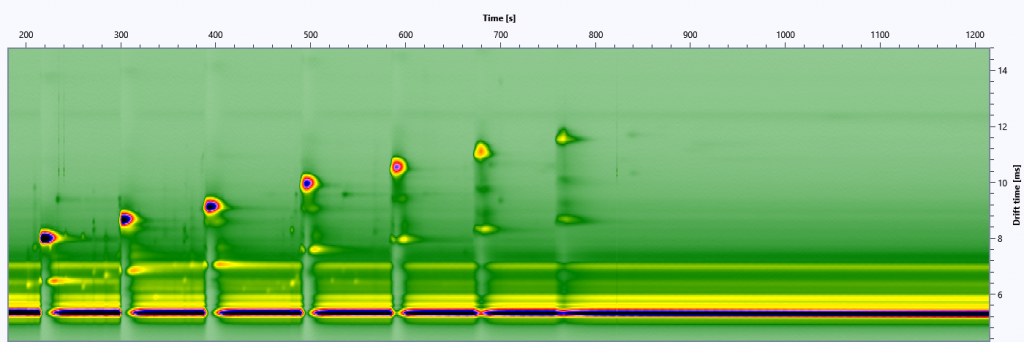GC-DTIMS 2030

The GC-DTIMS 2030 combines the high selectivity of the chromatographic separation technique with the extraordinary sensitivity for the drift tube ion mobility spectrometry (DTIMS). Therefore, the GC-DTIMS-combination is a very powerful analytical tool for a wide range of applications with excellent sensitivities. Drift tube ion mobility spectrometry (DTIMS) is a gas detection technology that separates and identifies chemical ions based on their mobility under an electric field at atmospheric pressure. DTIMS can be used to detect and to identify volatiles in aqueous, solid and gaseous matrices.
Sample preparation and injection
There are a wide variety of sample preparation, extraction and processing techniques each with their own advantages and disadvantages. Due to the integrated well established split/splitless injector technology, known from the conventionally gas chromatography, the sample introduction can be made by direct injection via a syringe or by solid phase micro-extraction (SPME).
The SPME, for example, is a simple and effective adsorption/desorption sample preparation technique that eliminates the need for solvents or complicated apparatus for concentrating volatiles, semivolatiles or nonvolatiles compounds in liquid samples or headspace and is fully compatible with the GC-DTIMS system. SPME also reduces the sample preparation time up 70% and can be automated.


Examples of Applications
- Environmental analyses of water samples (e.g. hydrocarbons, PAHs, poly chlorinated biphenyls, phenols, organophosphate pesticides, trace odors)
- Headspace analysis of trace impurities in polymer and solid samples
- Toxicology analyses: blood alcohol or drugs Indoor air quality (e.g. aldehydes, terpenes, ketones)
- Flavor analyses of food products
- Detection of toxic industrial compounds (e.g. BTEX)
- Analysis of breath for medical diagnostic
- Product quality control by detection of target compounds
- Detection of wood preservatives like lindane, penta-chlorophenol
Advantages
- High reproducibility
- GC temperatures: isotherm or ramps up to 200°C
- Heating rates up to 30°C/min
- Split/splitless heated Injector up to 300°C
- Integrated mass flow controller for presice controlling of column flows
- Standard Inlet liner
- Powerful custom software for data visualization, real time control and offline analysis
- Detects positive and negative ions
- High flexibility: Can also be used as a standalone detector (without GC run)
Technical Data DTIMS 2030
Drift length
59 mm
Drift gradient
72 V/mm
Drift voltage max.
4250 V
Ionisation
X-ray and/or UV
Grid opening time
10-1000 µs
Drift gas flow
50-700 ml/min
Drift tube temp.
RT bis 120°C
Working pressure
Atm
Sensitivity
ppb to ppt range
Polarity
positive/negative
